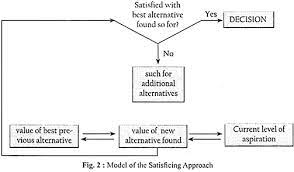RFQ vs RFP: Understanding the Difference
When it comes to procurement processes, two commonly used terms are RFQ and RFP. These acronyms stand for Request for Quotation (RFQ) and Request for Proposal (RFP). While they may sound similar, they have distinct differences in their purpose and usage. Understanding these differences is crucial for businesses looking to engage in procurement activities.
Request for Quotation (RFQ)
An RFQ is a document used by organizations to solicit quotations from potential suppliers or vendors. It is typically used when the buyer has a clear idea of what they want and requires specific pricing information. The RFQ focuses on gathering quotes and comparing them based on price, delivery terms, and other relevant factors.
The RFQ process involves providing detailed specifications or requirements to potential suppliers and requesting them to submit their pricing information. Suppliers respond with their quotes, which are then evaluated by the buyer based on factors such as cost-effectiveness, quality, lead time, and other criteria specific to the project.
The primary goal of an RFQ is to gather pricing information quickly and efficiently. It is commonly used for procuring goods or services that are well-defined and standardized, where price plays a significant role in the decision-making process.
Request for Proposal (RFP)
An RFP, on the other hand, is a document used by organizations when they require more than just price information from potential vendors. It is typically used when the buyer needs detailed proposals outlining how vendors will meet specific requirements or solve particular problems.
An RFP goes beyond just asking for prices; it seeks comprehensive solutions from vendors that address all aspects of a project or service. The document outlines the buyer’s needs, objectives, technical specifications, evaluation criteria, and any other relevant information. Vendors are expected to submit detailed proposals that demonstrate their understanding of the requirements and how they will deliver the desired outcomes.
The RFP process involves a thorough evaluation of vendor proposals, which may include presentations, demonstrations, or negotiations. The evaluation criteria often go beyond just cost and may consider factors such as technical expertise, track record, innovation, scalability, and long-term partnership potential.
RFPs are commonly used when the buyer needs customized solutions or services that require a deeper understanding of their unique requirements. They are prevalent in industries such as software development, consulting services, construction projects, and large-scale procurement activities.
Conclusion
While both RFQs and RFPs are essential tools in the procurement process, they serve different purposes. An RFQ is primarily focused on gathering pricing information for well-defined goods or services. On the other hand, an RFP seeks comprehensive proposals that address specific requirements and objectives.
Understanding these differences is crucial for businesses to determine which approach is most suitable for their procurement needs. By choosing the right method – RFQ or RFP – organizations can ensure they receive the best value for their investments while meeting their unique requirements.
8 Essential Tips for Navigating RFQ and RFP Processes: Making Informed Decisions in Procurement
- Understand the difference
- RFQ is used when you have a clear idea of what you need and want to compare prices from different suppliers.
- RFP is used when you have a complex project and want detailed proposals from vendors, including their approach, timeline, and cost.
- RFQ focuses on price comparison, while RFP emphasizes evaluating vendor capabilities and suitability for the project.
- Provide specific requirements in an RFQ to get accurate quotes that can be easily compared.
- In an RFP, include detailed project specifications to allow vendors to create comprehensive proposals tailored to your needs.
- RFQs are generally simpler and quicker than RFPs since they require less information from vendors.
- When evaluating responses, consider both the price and the quality of proposed solutions in order to make an informed decision.
Understand the difference
Understanding the difference between RFQ and RFP is crucial in procurement processes. An RFQ focuses on gathering pricing information for well-defined goods or services, while an RFP seeks comprehensive proposals that address specific requirements and objectives. By grasping this distinction, businesses can effectively navigate the procurement landscape and make informed decisions that align with their needs. Whether it’s about comparing quotes or seeking customized solutions, having a clear understanding of RFQs and RFPs empowers organizations to optimize their procurement strategies and achieve desired outcomes.
RFQ is used when you have a clear idea of what you need and want to compare prices from different suppliers.
When it comes to procurement, using an RFQ (Request for Quotation) is beneficial when you already have a clear understanding of your requirements and want to compare prices from different suppliers. By providing detailed specifications to potential vendors and requesting pricing information, you can efficiently gather quotes and evaluate them based on factors such as cost-effectiveness, delivery terms, and quality. The RFQ process allows you to make informed decisions by comparing prices from various suppliers, ensuring that you select the most suitable option for your needs.
RFP is used when you have a complex project and want detailed proposals from vendors, including their approach, timeline, and cost.
When embarking on a complex project, it is crucial to gather detailed proposals from vendors that encompass their approach, timeline, and cost. This is where the Request for Proposal (RFP) comes into play. By utilizing an RFP, businesses can effectively communicate their specific requirements and objectives to potential vendors, allowing them to showcase their expertise and provide comprehensive solutions tailored to the project’s complexities. The RFP process enables thorough evaluation and comparison of vendor proposals, ensuring that the chosen partner aligns with the project’s scope and meets both technical and financial expectations.
RFQ focuses on price comparison, while RFP emphasizes evaluating vendor capabilities and suitability for the project.
When it comes to RFQ versus RFP, it’s important to understand that these two procurement processes have distinct focuses. The RFQ primarily centers around price comparison, allowing buyers to gather quotes from potential suppliers and evaluate them based on cost-effectiveness. On the other hand, the RFP places greater emphasis on evaluating vendor capabilities and suitability for the project. It seeks comprehensive proposals that go beyond just pricing, enabling buyers to assess factors such as technical expertise, track record, and how well vendors can meet specific requirements. Understanding this key difference helps businesses determine which approach aligns better with their procurement needs and objectives.
Provide specific requirements in an RFQ to get accurate quotes that can be easily compared.
When using an RFQ, it is crucial to provide specific requirements to potential suppliers in order to receive accurate quotes that can be easily compared. By clearly outlining your needs and specifications, you enable suppliers to understand the scope of the project and provide precise pricing information. Specific requirements help eliminate ambiguity and ensure that all vendors are bidding on the same criteria. This allows for a more efficient evaluation process, enabling you to compare quotes based on factors beyond just price, such as delivery terms or quality. Providing detailed requirements in an RFQ helps streamline the procurement process and increases the likelihood of receiving accurate and comparable quotes from potential suppliers.
In an RFP, include detailed project specifications to allow vendors to create comprehensive proposals tailored to your needs.
When preparing an RFP, it is crucial to include detailed project specifications. By providing clear and specific requirements, you enable vendors to create comprehensive proposals that are tailored to your unique needs. The more information you provide about your project objectives, technical specifications, desired outcomes, and evaluation criteria, the better equipped vendors will be to understand your requirements and propose solutions that align with your goals. This level of detail ensures that vendors can provide accurate and relevant information in their proposals, allowing you to make informed decisions when selecting the best vendor for your project.
RFQs are generally simpler and quicker than RFPs since they require less information from vendors.
When comparing RFQs and RFPs, it’s important to note that RFQs are generally simpler and quicker than RFPs. This is because RFQs require less information from vendors. With an RFQ, the focus is primarily on gathering pricing information and evaluating quotes based on cost-effectiveness and other relevant factors. In contrast, RFPs delve deeper into vendor proposals, seeking comprehensive solutions that address specific requirements beyond just price. So, if time is of the essence or if the procurement needs are straightforward and standardized, opting for an RFQ may be a more efficient choice.
When evaluating responses, consider both the price and the quality of proposed solutions in order to make an informed decision.
When evaluating responses to RFQs or RFPs, it is crucial to consider both the price and the quality of proposed solutions. While cost-effectiveness is an important factor, solely focusing on price may lead to overlooking the quality and suitability of the solutions being offered. By taking into account both price and quality, businesses can make informed decisions that align with their objectives and requirements. This comprehensive evaluation ensures that the chosen vendor not only offers a competitive price but also delivers high-quality solutions that meet the desired outcomes.




